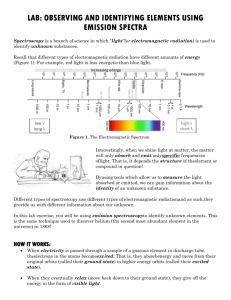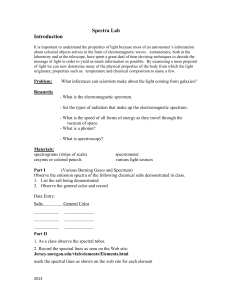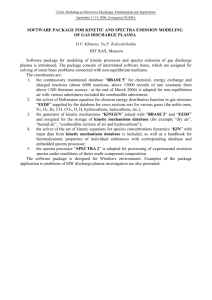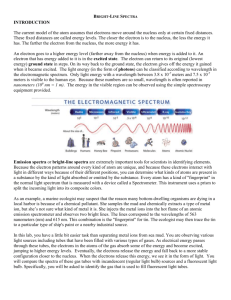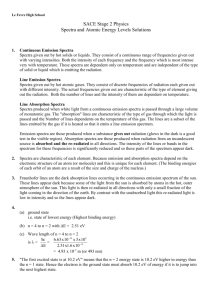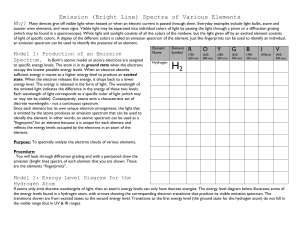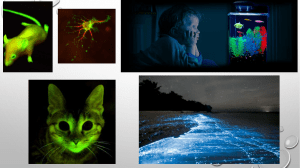Line Spectra
advertisement
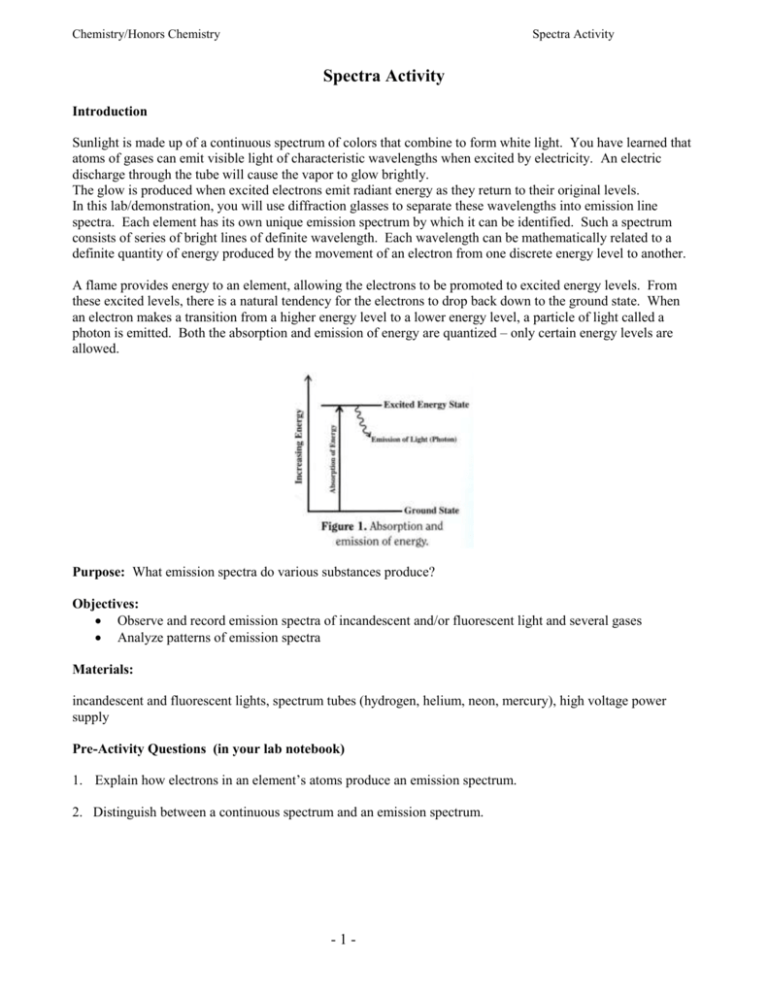
Chemistry/Honors Chemistry Spectra Activity Spectra Activity Introduction Sunlight is made up of a continuous spectrum of colors that combine to form white light. You have learned that atoms of gases can emit visible light of characteristic wavelengths when excited by electricity. An electric discharge through the tube will cause the vapor to glow brightly. The glow is produced when excited electrons emit radiant energy as they return to their original levels. In this lab/demonstration, you will use diffraction glasses to separate these wavelengths into emission line spectra. Each element has its own unique emission spectrum by which it can be identified. Such a spectrum consists of series of bright lines of definite wavelength. Each wavelength can be mathematically related to a definite quantity of energy produced by the movement of an electron from one discrete energy level to another. A flame provides energy to an element, allowing the electrons to be promoted to excited energy levels. From these excited levels, there is a natural tendency for the electrons to drop back down to the ground state. When an electron makes a transition from a higher energy level to a lower energy level, a particle of light called a photon is emitted. Both the absorption and emission of energy are quantized – only certain energy levels are allowed. Purpose: What emission spectra do various substances produce? Objectives: Observe and record emission spectra of incandescent and/or fluorescent light and several gases Analyze patterns of emission spectra Materials: incandescent and fluorescent lights, spectrum tubes (hydrogen, helium, neon, mercury), high voltage power supply Pre-Activity Questions (in your lab notebook) 1. Explain how electrons in an element’s atoms produce an emission spectrum. 2. Distinguish between a continuous spectrum and an emission spectrum. -1- Chemistry/Honors Chemistry Spectra Activity Procedure 1. View an incandescent (or fluorescent) light bulb using the diffraction glasses. What do you observe? Draw the spectrum using colored pencils in the Data Table you have copied into your lab notebook. Make sure your lines are vertical (not horizontal). 2. View the emission spectra from tubes of gaseous hydrogen, helium, neon and mercury, using the diffraction glasses. Use colored pencils to make drawings in the data table of the spectra observed. Data Tables (copy into your lab notebook) Table 1. Continuous spectrum of incandescent and fluorescent lights Drawings of Continuous Spectra Incandescent or fluorescent light Table 2. Emission spectra of individual elements. Drawings of Emission Spectra Hydrogen Helium Neon Mercury Analysis and Conclusions (answer in your lab notebook) 1. Describe the spectrum produced by the incandescent light source. 2. Prior to its discovery on earth, helium was first confirmed in the sun. Explain how this can be possible. 3. How can the existence of line spectra help to show that energy levels in atoms exist? 4. How can the single electron in a hydrogen atom produce all of the lines found in its emission spectrum? 5. How can spectra be used to identify the presence of specific elements in a substance? Real-World Chemistry 1. How can emission spectra be used by the Hubble space telescope to study the structures of stars or other objects found in deep space? -2-

